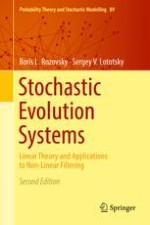This monograph, now in a thoroughly revised second edition, develops the theory of stochastic calculus in Hilbert spaces and applies the results to the study of generalized solutions of stochastic parabolic equations.
The emphasis lies on second-order stochastic parabolic equations and their connection to random dynamical systems. The authors further explore applications to the theory of optimal non-linear filtering, prediction, and smoothing of partially observed diffusion processes. The new edition now also includes a chapter on chaos expansion for linear stochastic evolution systems.
This book will appeal to anyone working in disciplines that require tools from stochastic analysis and PDEs, including pure mathematics, financial mathematics, engineering and physics.
